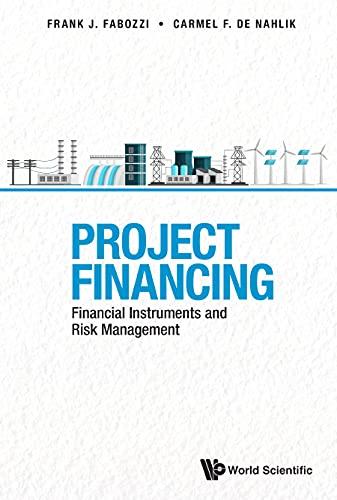Answered step by step
Verified Expert Solution
Question
1 Approved Answer
Case Study: Building project after-tax analysis with and without debt. Previous assignments did not explicitly consider the effect of depreciation, debtor taxes, as it was

 Case Study: Building project after-tax analysis with and without debt. Previous assignments did not explicitly consider the effect of depreciation, debtor taxes, as it was primarily concerned with illustrating the basic financial issues, using NPV, IRR and payback methods, the different required rates of return used by developers, bankers, and potential purchasers/investors. Consider the effects of depreciation on this proposed building project: . The purchase price of the land is $50 million. The completed cost of the building is $350 million as of the time that the building is occupied and the owners begin to receive lease payments. (the total project cost including land is therefore $400 million) The annual net revenue from leases (total lease income minus all of the owner's expenses other than depreciation) is $40 million. The annual accounting profit from the building will be $40 million minus depreciation. The building is depreciated using straight line depreciation over a period of 40 years. The salvage value of the structure is $33 million. The owner's effective income tax rate is 40%. The owner's pre-tax MARR is 15%. If the owner sells the building, there will be a 20% capital gains tax on the difference between the sale price and the depreciated basis for the building. a. Project Evaluation without and with debt. i. What is the annual accounting profit? ii. What is the NPV of the owner's cash flows over the first 20-years of the project? Over the 40- year life of the project? Is this enough to justify the cost of the building? ini. If the owner sells the building for $900 million at the end of 20-years, what is the capital gains tax? What is the NPV of the sale price minus the capital gains tax? How does this affect the overall value of the project? iv. Assume the developer/owner takes on an interest- only loan at an interest rate of 6%. The loan amount is $300 million and is taken at time t=0 to partly finance the $400 million initial project cost. There is therefore an $18 million dollar interest cost each year, which is an accounting expense (tax deductible). Naturally, when the building is sold, the $300 million loan has to be paid out from the proceeds of the sale of the building. What is the NPV of the project assuming a sale after 20 years of operation as in iii. above, and assuming again an after-tax MARR of 9%.? Did taking the loan improve the project acceptability
Case Study: Building project after-tax analysis with and without debt. Previous assignments did not explicitly consider the effect of depreciation, debtor taxes, as it was primarily concerned with illustrating the basic financial issues, using NPV, IRR and payback methods, the different required rates of return used by developers, bankers, and potential purchasers/investors. Consider the effects of depreciation on this proposed building project: . The purchase price of the land is $50 million. The completed cost of the building is $350 million as of the time that the building is occupied and the owners begin to receive lease payments. (the total project cost including land is therefore $400 million) The annual net revenue from leases (total lease income minus all of the owner's expenses other than depreciation) is $40 million. The annual accounting profit from the building will be $40 million minus depreciation. The building is depreciated using straight line depreciation over a period of 40 years. The salvage value of the structure is $33 million. The owner's effective income tax rate is 40%. The owner's pre-tax MARR is 15%. If the owner sells the building, there will be a 20% capital gains tax on the difference between the sale price and the depreciated basis for the building. a. Project Evaluation without and with debt. i. What is the annual accounting profit? ii. What is the NPV of the owner's cash flows over the first 20-years of the project? Over the 40- year life of the project? Is this enough to justify the cost of the building? ini. If the owner sells the building for $900 million at the end of 20-years, what is the capital gains tax? What is the NPV of the sale price minus the capital gains tax? How does this affect the overall value of the project? iv. Assume the developer/owner takes on an interest- only loan at an interest rate of 6%. The loan amount is $300 million and is taken at time t=0 to partly finance the $400 million initial project cost. There is therefore an $18 million dollar interest cost each year, which is an accounting expense (tax deductible). Naturally, when the building is sold, the $300 million loan has to be paid out from the proceeds of the sale of the building. What is the NPV of the project assuming a sale after 20 years of operation as in iii. above, and assuming again an after-tax MARR of 9%.? Did taking the loan improve the project acceptability


Step by Step Solution
There are 3 Steps involved in it
Step: 1

Get Instant Access to Expert-Tailored Solutions
See step-by-step solutions with expert insights and AI powered tools for academic success
Step: 2

Step: 3

Ace Your Homework with AI
Get the answers you need in no time with our AI-driven, step-by-step assistance
Get Started


